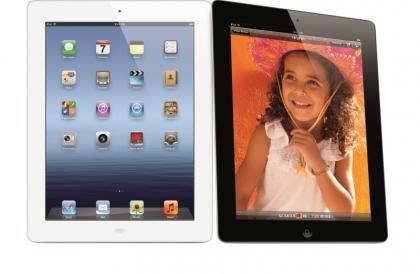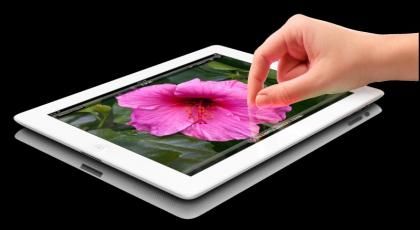Apple all but created the tablet market with the original iPad and, two years and 55 million sales later, other manufacturers are still struggling to compete. The latest iPad raises the stakes still higher, thanks to a huge 1,536 x 2,048 screen resolution and an unchanged price from the previous model.
One thing that hasn’t changed is its appearance, although this no-version-number ‘ new iPad ’ is 51g heavier and 0.6mm thicker than the iPad 2 - the extra thickness didn’t cause us any problems with our iPad 2 accessories, though.

Looks practically identical to its predecessor and is still available in black or white
The new iPad's standout feature is definitely its screen. It has the same 9.7in size and 4:3 aspect ratio as the iPad 2’s, but now has a ‘retina’ resolution of 1,536 x 2,048 pixels. In other words, Apple claims the individual pixels are now too small to make out at a typical viewing distance — something that the company has managed by cramming in some 3.14 million of them onto the screen. This gives a pixel density of 264 pixels per inch (PPI) - twice that of the iPad 2. To see how that matches up to other modern displays check out our Top 10: Displays in Consumer Technology .
Together with improved IPS panel technology that helps give more saturated colours and greater contrast, the result is a display that looks more like a gloss print from a high-end inkjet printer than a computer screen, and everything from text to photos looks incredibly crisp and colourful. Small text on web pages and documents is now perfectly legible without zooming in, too, which makes the iPad a much more useful tool for serious productivity. The retina display really needs to be seen in person to be appreciated, but a good way to imagine the improvement over the iPad 2 is to think about the difference in quality when moving from standard- to high-definition TV.

It's a fantastic display, with more detail than you can actually see
Apple has also beefed-up the new iPad’s processor. While the chip is essentially the same as the A5 used in the iPad 2, its ‘X’ suffix denotes a new quad-core graphics chipset. In benchmarks at least, processor performance is largely unchanged, but so is graphics performance — and this is quite a feat considering the new iPad's chipset has to handle four times as many the pixels as the iPad 2's.
